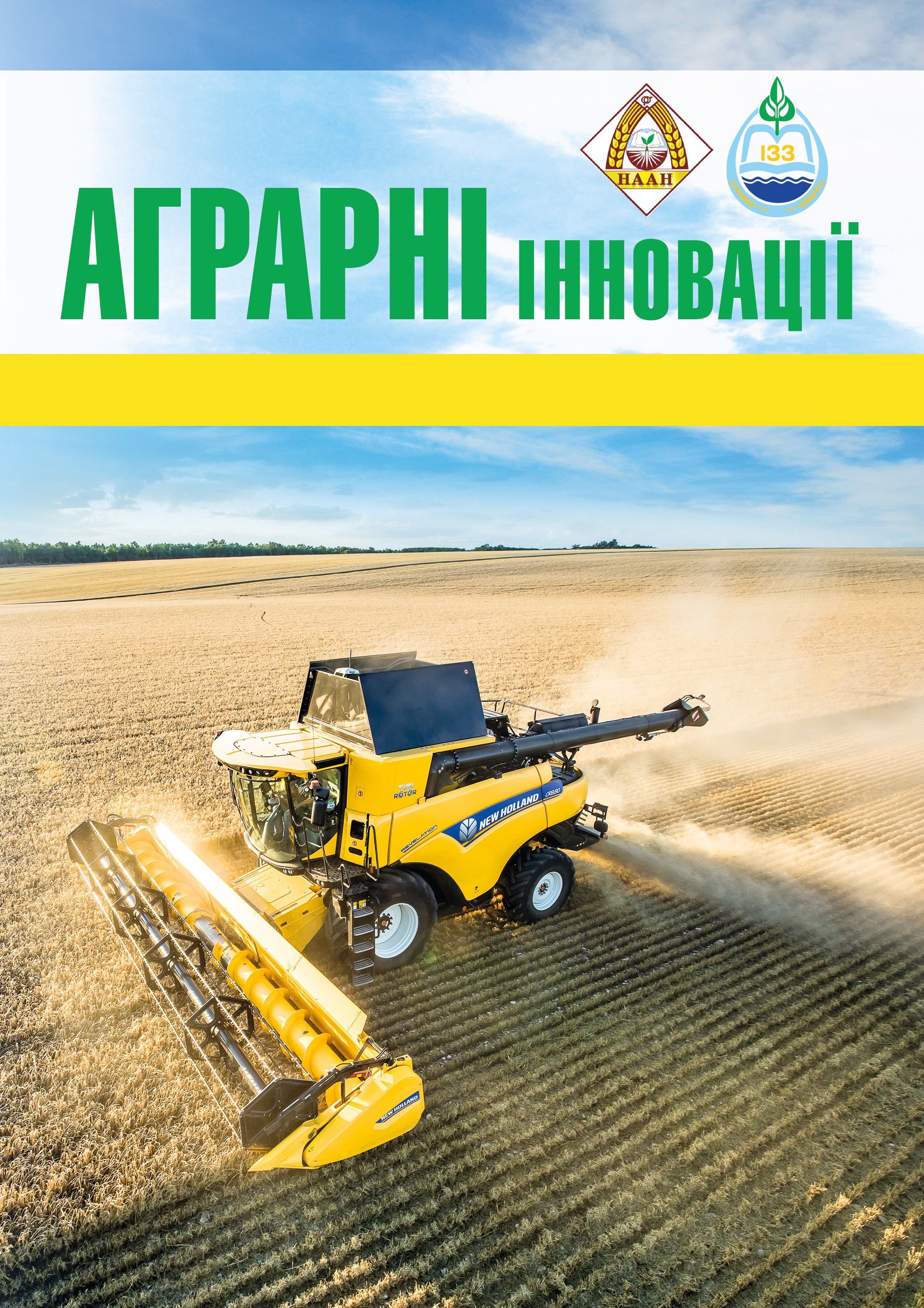Inheritance of resistance to septoria (Septoria tritici Rob. Et Desm.) hybrids of winter wheat of various ecological and genetic origin under irrigation
Abstract
Purpose. To establish the nature of the inheritance of the trait "resistance to septoria" in hybrids of soft winter wheat, created with the help of late-maturing specimens of the Western European ecotype. To establish correlations of resistance to septoria with the duration of the interphase period "flowering – grain ripeness" and grain yield of elite breeding families in breeding nurseries. Methods. Field research was conducted at the Institute of Irrigated Agriculture of NAAS in 2016-2021. The object of research were modern varieties of winter wheat of the Institute, collection samples of Western European ecotype, which were introduced from France and hybrids created with their participation. Varieties and hybrids were sown under irrigation by the scheme "maternal form, paternal, hybrid". Methods – field, laboratory, breeding and genetic, statistical. Results. Hybrids of the first generation (F1) inherited this trait mainly by intermediate type and dominance of resistance. Hypothetical heterosis showed almost all combinations in the range of 102.4… 108.9, and the combination Kf6-16 / Ovidіі showed a weak dominance of susceptibility (99.1%). True heterosis was shown by 7 combinations out of 12, and the degree of heterosis was very low (100.1… 103.8 %), which indicates a polygenic type of heredity and no effect of cumulative action of resistance alleles and heterosis effect. In the second generation (F2) inheritance was mainly intermediate type and dominated by resistance to septoria. The degree of true heterosis was recorded in only one combination (Kf2-16 / Kherson bezosta) and at a very low level – 100.9 %. No hybrid exceeded Koshov's best paternal form in terms of resistance to septoria – 83.8 %. Conclusions. The incidence of septoria in hybrid families of breeding nurseries ranged from 3.0 to 37.8 %. The coefficient of variation was phenotypic at a high level of 26.3… 32.4 %, which indicates a significant diversity of genotypes in terms of resistance (affected) and the possibility of effective selection. The possibility of conducting effective selections for resistance to septoria in hybrid populations created with the participation of parental forms of the Western European ecotype is confirmed by fairly high coefficients of heredity in the broad sense (H2) – 58.3… 74.8%.
References
2. Ретьман С.В. Плямистості озимої пшениці. К.: Колобіг, 2010. 232 с.
3. Моргун В.В. Фізіологія рослин: досягнення та нові напрями розвитку. За редакції В.В. Моргуна. Київ : Логос. 2017. С. 6–8.
4. Демидов О.А., Вологдіна Г.Б., Волощук С.І., Гуменюк О.В., Кириленко В.В., Хоменко С.О. Вихідний матеріал для селекції пшениці м’якої озимої на високу стійкість до хвороб в умовах Лісостепу України. Фактори експериментальної еволюції організмів. 2019. Т. 24. С. 63–69.
5. Моргун В.В., Топчій Т.В. Пошук нових джерел стійкості пшениці озимої до основних збудників грибних хвороб. Фізіологія рослин і генетика. 2016. Том 48, № 5. С. 393–400, doi: https://doi.org/ 10.15407/frg2016.05.393.
6. Лозінська Т.П., Власенко В.А., Солона В.Й. Характеристика сортів пшениці м’якої ярої за елементами продуктивності та їх оцінка методом селекційних індексів. Наук.-техн. бюл. Миронівського інституту пшениці ім. В.М. Ремесла. 2009. Вип. 9. С. 117–129.
7. Хоменко Л.О., Сандецька Н.В. Джерела комплексної стійкості пшениці озимої (Triticum aestivum L.) у селекції на адаптивність. Plant Varieties Studying and Protection. 2018. № 14(3). C. 270–275. https:// doi.ord/10.21498/2518-1017.14.3.2018.145289.
8. Орлюк А.П., Базалій Г.Г., Біляєва І.М. Особливості успадковування стійкості до фітопатогенів гібридами озимої пшениці при зрошенні. Зрошуване землеробство. Херсон : Айлант, 2007. Вип. 47. С. 134–139.
9. Демидов О.А., Вологдіна Г.Б., Волощук С.І., Гуменюк О.В., Кириленко В.В., Хоменко С.О. Вихідний матеріал для селекції пшениці м’якої озимої на високу стійкість до хвороб в умовах Лісостепу України. Фактори експериментальної еволюції організмів. 2019. Т. 24. С. 63–69.
10. Кириленко В.В., Дубовик Н.С., Гуменюк О.В., Вологдіна Г.Б., Лось Р.М., Дубовик Д.Ю. Селекція пшениці м’якої озимої за використання пшенично-житніх транслокацій в умовах центрального Лісостепу. Київ: Компрінт. 2021. 221 с.
11. Жупина А.Ю., Базалій Г.Г., Усик Л.О., Марченко Т.Ю., Лавриненко Ю.О. Успадкування висоти рослин гібридами пшениці озимої різного еколого генетичного походження в умовах зрошення. Аграрні інновації. 2021. № 10. С. 122–129. https://doi.org/10.32848/ agrar.innov.2021.10.19.
12. Методика польових і лабораторних досліджень на зрошуваних землях. Вожегова Р.А., Малярук М.П. та ін. Херсон: Грінь Д. С., 2014. 286 с.
13. Saari E.E., Prescott J.M. A scale for appraising the foliar intensity of wheat diseases. Plant Dis. Rep. 1975. № 59. P. 377–380.
14. Бабаянц О.В., Бабаянц Л.Т. Основы селекции и методология оценок устойчивости пшенцы к возбудителям болезней. Одесса: ВМВ. 2014. 401 с.
15. Петренкова В.П., Боровська І.Ю., Лучна І.С, Сокол Т.В., Ниска І.М., Кучеренко Є.Ю., Компанець К.В. Методологія виділення форм польових культур за стійкістю до комплексу біо- та абіотичних чинників. Харків: ФОП Бровін. 2018. 242 с.






